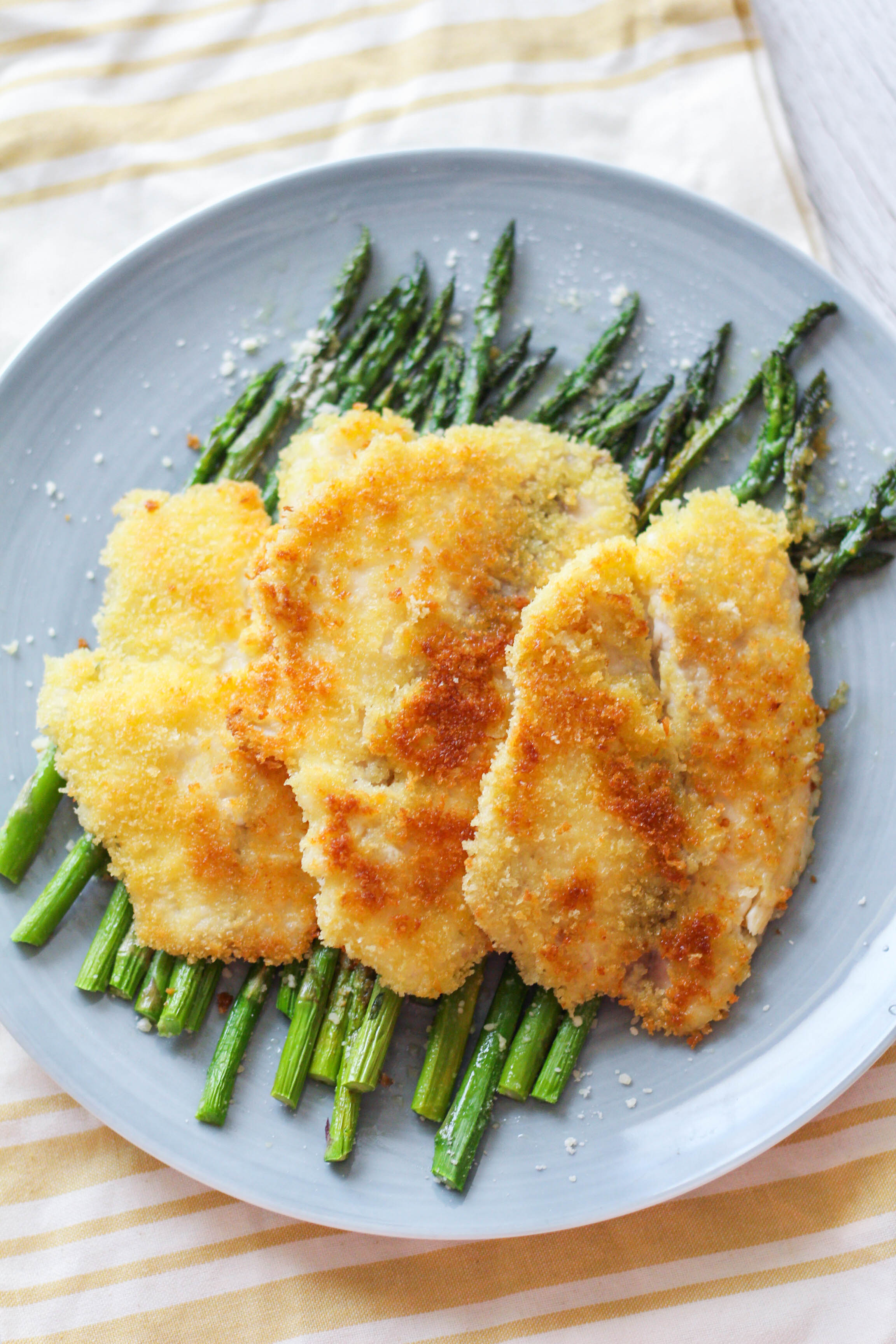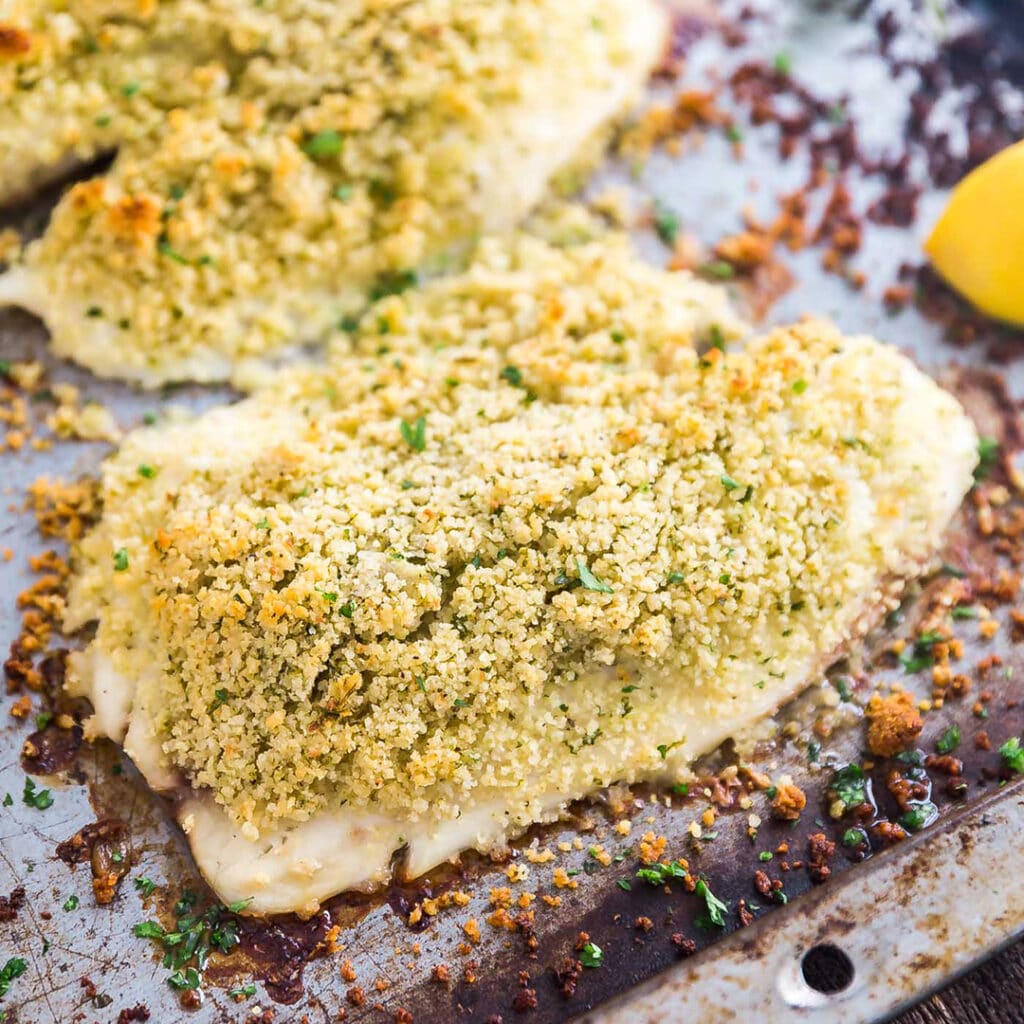Crispy Perfection: Mastering the Art of Panko Crusted Tilapia
:max_bytes(150000):strip_icc()/Crunchy-Panko-Crusted-Baked-Tilapia-TO-2021-a97dd22049544850979aea54c90686c8.jpg)
Tilapia, a mild-flavored, flaky white fish, is a versatile canvas for culinary creativity. While its delicate taste can sometimes feel bland on its own, a simple yet effective technique like panko breading transforms it into a crispy, golden-brown delight. This article delves into the art of making perfect panko-crusted tilapia, exploring various techniques, ingredient choices, and serving suggestions to elevate this simple dish to new heights.
Understanding the Magic of Panko
Panko, a Japanese-style breadcrumb, is the secret weapon behind this dish’s irresistible crunch. Unlike traditional breadcrumbs, panko boasts a coarser texture, larger flakes, and a lower moisture content. This unique structure results in a lighter, crispier crust that retains its texture even after cooking, avoiding the soggy disappointment often associated with other breading methods. The larger flakes also create a more substantial, satisfying bite.
Beyond the Breadcrumbs: Key Ingredients and Their Roles
While panko is the star, several other ingredients play crucial roles in achieving the perfect panko-crusted tilapia. Let’s break down their importance:
-
Tilapia Fillets: Choosing fresh, high-quality tilapia fillets is paramount. Look for fillets that are firm to the touch, with a pearly white color and no strong fishy odor. Frozen fillets can also work, but ensure they are thoroughly thawed and patted completely dry before breading. The dryness is crucial to prevent a soggy crust.

Eggs: The egg wash acts as a binder, adhering the panko breadcrumbs to the tilapia fillets. A lightly beaten egg, ideally at room temperature, works best. Consider adding a tablespoon of milk or water to the egg wash for extra binding power and a slightly more tender crust.
-
Seasoning: The seasoning is where you can truly personalize your dish. Simple salt and pepper are excellent starting points, but don’t hesitate to experiment. Garlic powder, onion powder, paprika, cayenne pepper, Old Bay seasoning, or even a blend of herbs like Italian seasoning can all add depth and complexity to the flavor profile. Seasoning the tilapia before breading ensures flavor permeates the fish itself.
-
Flour (Optional): While not strictly necessary, a thin layer of all-purpose flour before the egg wash can act as an additional binder, helping to create an even thicker, crispier crust. This step is especially helpful with thinner fillets.
-
Oil for Frying: The choice of oil significantly impacts the final result. High-heat oils with a high smoke point, such as canola, vegetable, or peanut oil, are ideal for frying. Avoid oils with low smoke points, as they can burn and impart an unpleasant taste. Maintain a consistent oil temperature throughout the frying process for even cooking and optimal crispness.

Mastering the Breading Technique: A Step-by-Step Guide
The success of panko-crusted tilapia hinges on proper breading technique. Here’s a detailed step-by-step guide:
-
Prepare the Tilapia: Pat the tilapia fillets completely dry with paper towels. Excess moisture is the enemy of a crispy crust. Season generously with your chosen spices.
-
Optional Flour Dredge: If using flour, lightly dredge the seasoned fillets in all-purpose flour, ensuring they are evenly coated. Shake off any excess flour.
-
Egg Wash: Dip each floured (or unfloured) fillet into the lightly beaten egg wash, ensuring it’s fully coated. Allow any excess egg to drip off.
-
Panko Coating: Carefully coat each egg-washed fillet in panko breadcrumbs, pressing gently to ensure the crumbs adhere firmly. You may need to repeat this step to achieve a thicker, more substantial crust.
-
Rest (Optional): Allow the breaded fillets to rest for about 10-15 minutes before frying. This allows the breading to set, resulting in a crispier crust.
Cooking Methods: Frying, Baking, and Air Frying
While frying traditionally yields the crispiest results, there are alternative cooking methods that provide delicious variations:
-
Pan-Frying: Heat about ½ inch of oil in a large skillet over medium-high heat. Once the oil is hot (a breadcrumb dropped in should sizzle immediately), carefully place the breaded tilapia fillets in the skillet, ensuring not to overcrowd the pan. Fry for 2-3 minutes per side, or until golden brown and cooked through. Use tongs to carefully flip the fillets.
-
Baking: Preheat your oven to 400°F (200°C). Place the breaded fillets on a baking sheet lined with parchment paper. Bake for 15-20 minutes, or until golden brown and cooked through. Flipping halfway through ensures even cooking. Baking results in a less greasy, healthier option.
-
Air Frying: Preheat your air fryer to 400°F (200°C). Place the breaded fillets in the air fryer basket, ensuring they are not overcrowded. Air fry for 8-10 minutes, flipping halfway through, until golden brown and cooked through. Air frying offers a convenient and relatively healthy alternative to deep frying.
Serving Suggestions: Elevating the Dish
Panko-crusted tilapia is incredibly versatile and pairs well with a variety of accompaniments:
-
Tartar Sauce: A classic pairing that cuts through the richness of the fried fish.
-
Lemon Wedges: The acidity of lemon brightens the flavor of the tilapia and adds a refreshing contrast.
-
Remoulade Sauce: A creamy, flavorful sauce with a hint of spice.
-
Spicy Mayo: A simple yet flavorful sauce made with mayonnaise, sriracha, and lime juice.
-
Side Dishes: Consider serving with roasted vegetables, a fresh salad, rice pilaf, or creamy mashed potatoes.
Troubleshooting Common Issues:
-
Soggy Crust: This is often caused by excess moisture in the tilapia fillets. Ensure the fillets are completely dry before breading.
-
Burnt Crust: This usually indicates the oil is too hot. Reduce the heat slightly and monitor the temperature closely.
-
Uneven Cooking: Overcrowding the pan or oven can lead to uneven cooking. Cook the fillets in batches to ensure even browning and cooking.
Conclusion: A Culinary Adventure Awaits
Panko-crusted tilapia is a remarkably simple yet rewarding dish that showcases the versatility of this often-underestimated fish. By understanding the key ingredients, mastering the breading technique, and experimenting with different cooking methods and serving suggestions, you can create a truly memorable culinary experience. So, gather your ingredients, embrace the process, and enjoy the crispy, flavorful perfection of your homemade panko-crusted tilapia. The culinary adventure awaits!

Video tentang Crispy Perfection: Mastering the Art of Panko Crusted Tilapia
Penutup
Therefore, we hope this article has provided valuable insights on Crispy Perfection: Mastering the Art of Panko Crusted Tilapia. We thank you for the time you spent reading this article . See you in our next article!

:max_bytes(150000):strip_icc()/Crunchy-Panko-Crusted-Baked-Tilapia-TO-2021-a97dd22049544850979aea54c90686c8.jpg?w=1920&resize=1920,0&ssl=1)